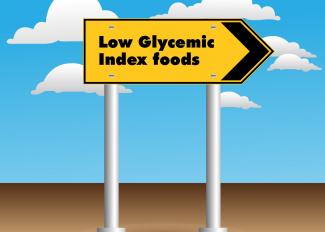
What is Glycaemic Index and why you need to be aware of it when planning meals - By Ujjwala Baxi, Registered Dietitian and Certified Diabetes Educator.
Mr. Ram and Mr. Raghu are brothers with diabetes. The breakfast menu is mostly the same for both. The only difference is that Mr. Ram likes to have his butter on white bread whereas Mr. Raghu prefers it on multigrain bread. They both leave for work. Within a couple of hours, Mr. Ram feels hungry while Mr. Raghu is still satiated. Why did Mr. Ram feel hungry sooner than Mr Raghu? The answer lies in the Glycaemic Index (GI) of the foods they ate.
Glycaemic Index measures how a carbohydrate containing food raises blood sugar after it is eaten. Various foods have been tested for their effect on blood glucose levels and categorised according to how quickly they break down and the glucose released into the bloodstream. They are then labelled as high GI (70 or greater), medium GI (56 – 69) or low GI (0 – 55) GI foods. A high GI food raises blood glucose more than a medium or low GI food.
How does GI impact our body
High GI foods are broken down into glucose and absorbed rapidly, thereby immediately increasing blood sugar. This quick rise in blood sugar is followed by a relatively rapid fall in blood sugar. Eating too many high GI foods may create cravings for more food soon after eating, triggering over-eating and weight gain. Low GI foods are broken down slowly into glucose and cause a slower and more stable rise in blood glucose levels, thereby helping to maintain normal blood glucose levels. Such foods help you stay full for longer.
Stabilising blood glucose levels is important as it helps reduce food cravings between meals, helps control weight, improves insulin sensitivity and blood glucose levels in people with Type 2 diabetes and those at risk of developing diabetes. Choosing lower GI foods may also help to lower your blood cholesterol and triglyceride levels and reduce the risk of heart diseases.
Meal planning with GI awareness
For instance, polished white rice has a higher GI of 72 whereas brown rice (with husk) has a comparatively low GI of 55. Hence, meal planning with GI involves choosing foods that have a low or medium GI. If eating a food with a high GI, you can combine it with low GI foods to help balance the meal. Eg, In order to cut down on the blood sugar surge after eating white rice, you can eat it with low GI options like red bean curry along with plain yoghurt or cucumber raita.
Below is a table of commonly consumed foods and their GI classification to help you plan your meals better.
|
Classification |
GI range |
Example |
|
Low GI |
55 or less |
Brown rice, most varieties of parboiled rice, beans, almonds, peanuts, walnuts, chickpeas, oilseeds (sunflower, flax, pumpkin, poppy, sesame); most whole intact grains (wheat, bajra, couscous, quinoa, millets, oat, rye, rice, barley), buckwheat flour (kuttu atta), most vegetables, most fruits (peaches, strawberries, mangoes) fruit sugar or fructose (naturally present in fruit) |
|
Medium GI |
56–69 |
Not intact whole wheat or enriched wheat, water chestnut flour (singhada atta, consumed especially during Hindu fasts), pita bread, Basmati rice, unpeeled boiled potato, sweet potato, beets, leeks, grape juice, raisins, prunes, pumpernickel bread, cranberry juice, regular ice cream, sucrose, banana, figs |
|
High GI |
70 and above |
White bread, most white rice, corn flakes, sweetened breakfast cereals, glucose, maltose, potato, pretzels, parsnip, bagels, baguettes, Gatorade |






